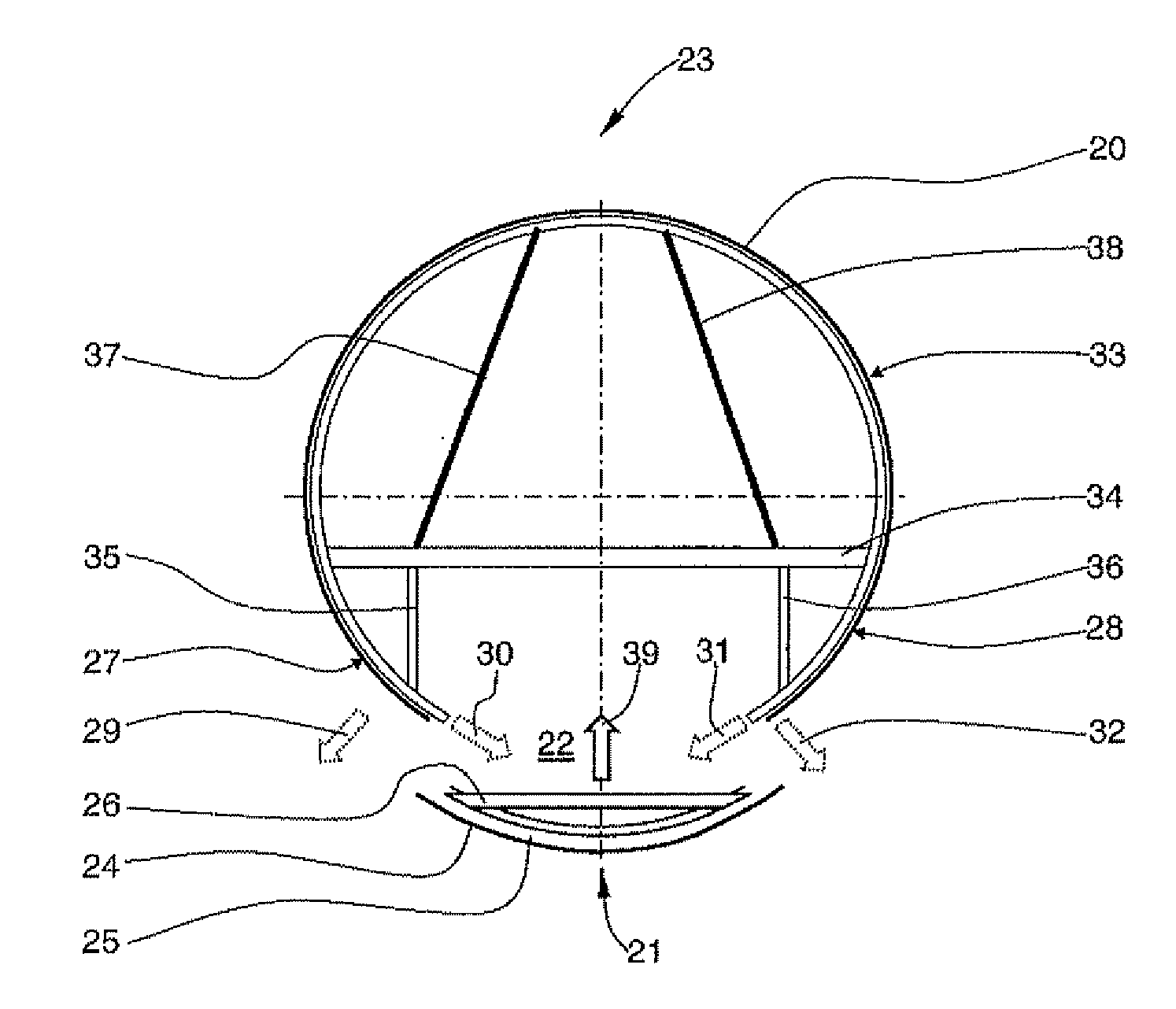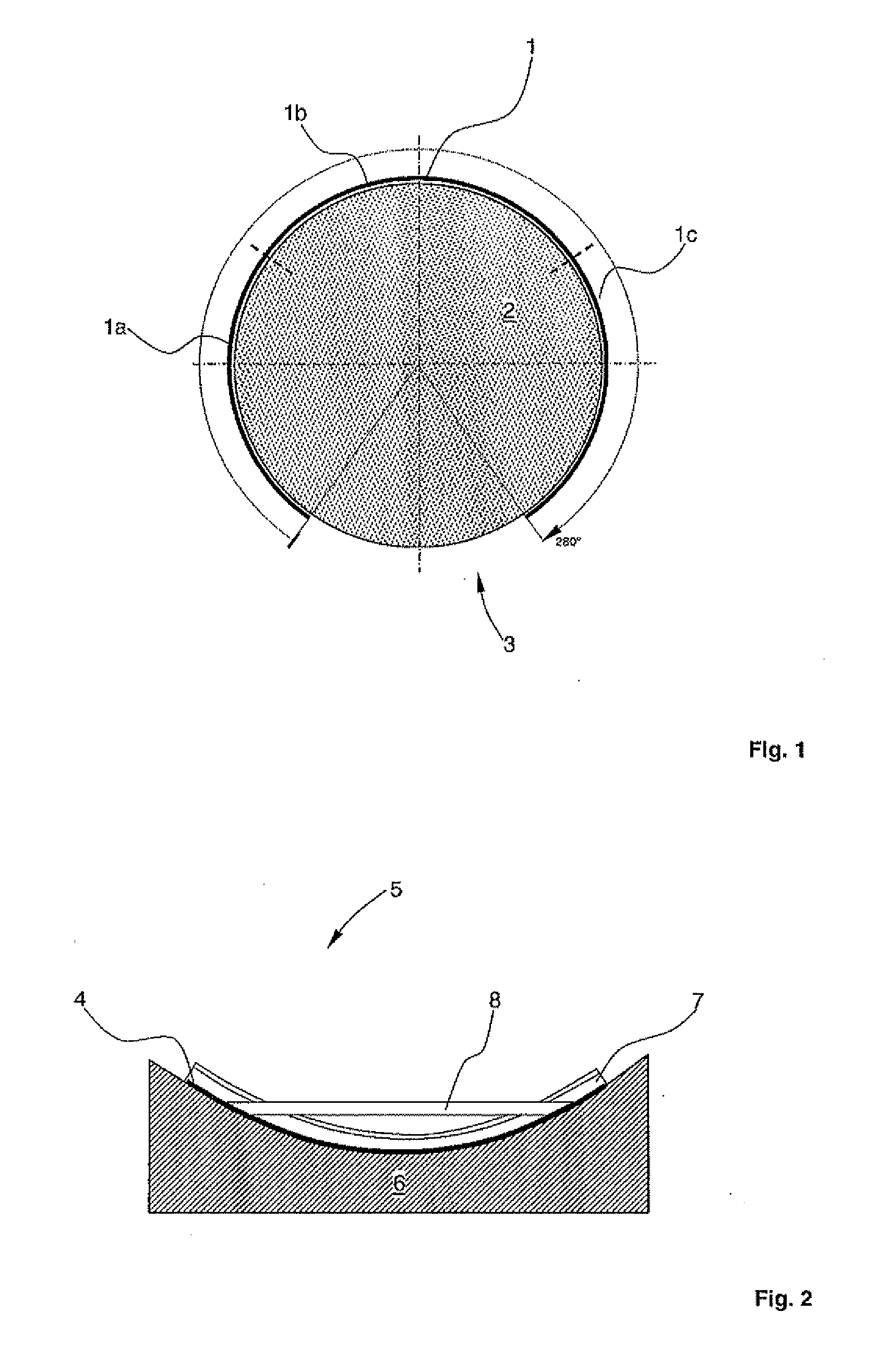Method for producing a fuselage airframe of an aircraft
a technology for fuselage airframes and aircraft, which is applied in the direction of manufacturing tools, transportation and packaging, and other domestic objects, can solve the problem of no opportunity for tolerance compensation, and achieve the effect of avoiding loss of strength and avoiding impairment of layer structur
- Summary
- Abstract
- Description
- Claims
- Application Information
AI Technical Summary
Benefits of technology
Problems solved by technology
Method used
Image
Examples
Embodiment Construction
[0038]FIG. 1 is a schematised cross-sectional view through an outer skin segment 1 formed with a fibre reinforced plastics material.
[0039]In a first step, the outer skin segment 1 is prefabricated with a fibre reinforced plastics material, in particular with a carbon fibre reinforced epoxy resin, for example on a winding core 2 by known deposition processes or winding processes. During this winding process, the stringer profiles which are not shown in FIG. 1 and which also run in the longitudinal direction of the outer skin segment 1, i.e. vertically to the plane of the drawing, are also formed integrally with the outer skin segment. To compensate tolerances, the outer skin sheath 1 has on its lower side a continuous longitudinal opening 3 (longitudinal slot) which runs vertically to the plane of the drawing. A cross-sectional surface (not shown in FIG. 1) of the outer skin segment 1 preferably forms a pitch circle of approximately 280° or has an aperture angle of 80°. Other apertur...
PUM
| Property | Measurement | Unit |
|---|---|---|
| Angle | aaaaa | aaaaa |
Abstract
Description
Claims
Application Information
 Login to View More
Login to View More - R&D
- Intellectual Property
- Life Sciences
- Materials
- Tech Scout
- Unparalleled Data Quality
- Higher Quality Content
- 60% Fewer Hallucinations
Browse by: Latest US Patents, China's latest patents, Technical Efficacy Thesaurus, Application Domain, Technology Topic, Popular Technical Reports.
© 2025 PatSnap. All rights reserved.Legal|Privacy policy|Modern Slavery Act Transparency Statement|Sitemap|About US| Contact US: help@patsnap.com



